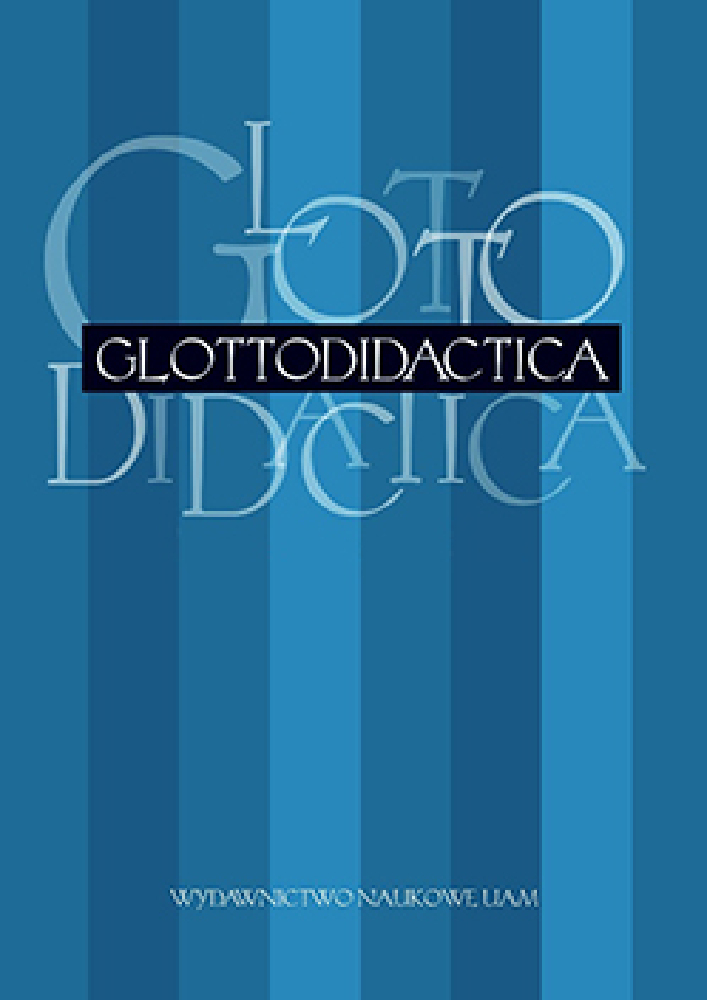Résumé
Modal verbs represent a special verb category and constitute an essential component of L2 German semantics. While Abrams and Rott (2017) suggest that German learner texts depict a 90% accuracy in the correct use of modal verbs in integrative writing tasks, the correct semantic use of the modal sollen (‘supposed to’; ‘should’) seems to pose a particular challenge (Jentges 2016), especially in an assessment context. In this corpus analysis, 1,032 L2 German assessment texts across all CEFR levels were analyzed with respect to the L2 semantic use of sollen against the backdrop of the assessment prompts. 68% of instances of all uses of sollen in A1 texts and 53% of all uses of sollen in A2 texts showed an inappropriate semantic use of sollen. The discrepancy between these results and Abrams and Rott (2017) can be attributed to the prompts used in the assessments analyzed in this paper: They do not take into consideration the semantic mismatch between the use of the modal in the prompt and its inappropriate use in the texts produced.
Références
Abrams, Z. / Rott, S. (2017). Variability and variation of L2 grammar: A cross-sectional analysis of German learners’ performance on two tasks. Language Teaching Research, 21 (2), 144–165. DOI: https://doi.org/10.1177/1362168815627833
Anthonissen, L. / Mortelmans, T. (2016). German modals in second language acquisition: A con- structionist approach. Yearbook of the German Cognitive Linguistics Association, 4 (1), 9–30. DOI: https://doi.org/10.1515/gcla-2016-0004
Boss, B. (2008). Exploring the acquisition of German verb morphology by instructed learners. Australian Review of Applied Linguistics, 31 (2), 14. DOI: https://doi.org/10.2104/aral0814
Dimroth, C. (2008). Age effects on the process of L2 acquisition? Evidence from the acquisition of negation and finiteness in L2 German. Language Learning, 58 (1), 117–150. DOI: https://doi.org/10.1111/j.1467-9922.2007.00436.x
Hentschel, E. / Weydt, H. (2021). Handbuch der deutschen Grammatik. Fifth edition. Berlin / Boston: de Gruyter. DOI: https://doi.org/10.1515/9783110629651
Hyland, K. (2007). Genre pedagogy: Language, literacy and L2 writing instruction. Journal of Second Language Writing, 16 (3), 148–164. DOI: https://doi.org/10.1016/j.jslw.2007.07.005
Jentges, S. (2016). Deutsch lernt man meistens auf Niederländisch. Zielsprachengebrauch im schulischen Fremdsprachenunterricht in den Niederlanden. Glottodidactica. An International Journal of Applied Linguistics, 43 (1), 107–121. DOI: https://doi.org/10.14746/gl.2016.43.1.8
Maden-Weinberger, U. (2009). “Modality in learner German: A corpus-based study investigating modal expressions in argumentative texts by British learners of German”. Doctoral dissertation, Lancaster University.
Nikolova, M. (2018). Teaching German modal verbs through cognitive linguistics insights. German Journal Sprache Literatur Kultur, 1 (1), 3–37.
Prévost, P. (2003). Truncation and missing inflection in initial child L2 German. Studies in Second Language Acquisition, 25 (1), 65–97. DOI: https://doi.org/10.1017/S0272263103000032
Sasayama, S. / Garcia Gomez, P. / Norris, J.M. (2021). Designing efficient L2 writing assessment tasks for low-proficiency learners of English. ETS Research Report Series, 2021 (1), 1–31. DOI: https://doi.org/10.1002/ets2.12341
Scheffler, P. / Cinciała, M. (2011). Explicit grammar rules and L2 acquisition. ELT Journal, 65 (1), 13–23. DOI: https://doi.org/10.1093/elt/ccq019
Weinrich, H. (2003). Textgrammatik der deutschen Sprache. Third edition. Hildesheim: Wissenschaftliche Buchgesellschaft.
Zifonun, G. / Hoffmann, L. / Strecker, B. (eds.) (1997). Grammatik der deutschen Sprache. Berlin / New York: de Gruyter.
Licence
© Nadja Wulff, Sandra McGury 2024

Ce travail est disponible sous licence Creative Commons Attribution - Pas de Modification 4.0 International.
Auteurs
Les auteurs de textes acceptés pour publication dans la revue Glottodidactica sont tenus de remplir, signer et renvoyer à l'adresse de la rédaction, un accord sur l'octroi d'une licence gratuite pour les œuvres, avec obligation d'accorder une sous-licence CC.
Conformément à cet accord, les auteurs des textes publiés dans la revue Glottodidactica accordent à l'Université Adam Mickiewicz de Poznań une licence non exclusive et gratuite et autorisent l'utilisation de la sous-licence Creative Commons Attribution-NoDerivatives 4.0 International (CC BY-ND 4.0).
Les auteurs se réservent le droit de disposer librement de l'œuvre.
Utilisateurs
Les utilisateurs d'Internet intéressés ont le droit d'utiliser les œuvres publiées dans la revue Glottodidactica depuis 2016, selon les conditions suivantes :
- Attribution – obligation de fournir, conjointement avec l'œuvre distribuée, des informations sur l'auteur, le titre, la source (lien vers l'œuvre originale, DOI) et la licence elle-même.
- Aucune modification – l'œuvre doit être préservée dans sa forme originale. Sans le consentement de l'auteur, il n'est pas possible de distribuer l'œuvre modifiée sous forme de traductions, publications, etc.
Les droits d'auteur sont réservés pour tous les textes publiés avant 2016.
Autres
L'Université Adam Mickiewicz de Poznań conserve les droits sur la revue dans son ensemble (mise en page, forme graphique, titre, conception de la couverture, logo, etc.).
A PARTIR DE L’ANNEE 2015, LES ARTICLES PUBLIÉS DANS LA REVUE SONT DISPONIBLES SOUS LICENCE CREATIVE COMMONS : https://creativecommons.org/licenses/by-nd/4.0/deed.fr





